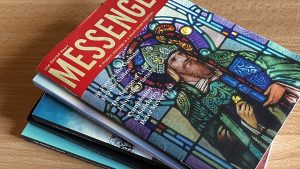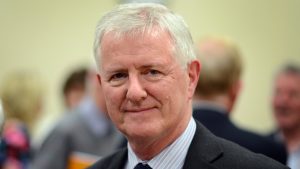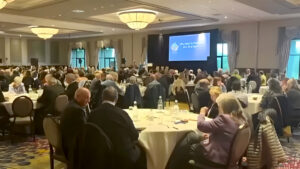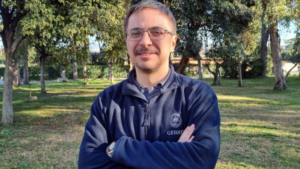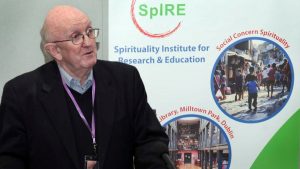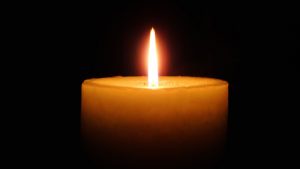‘A Divine Calling’
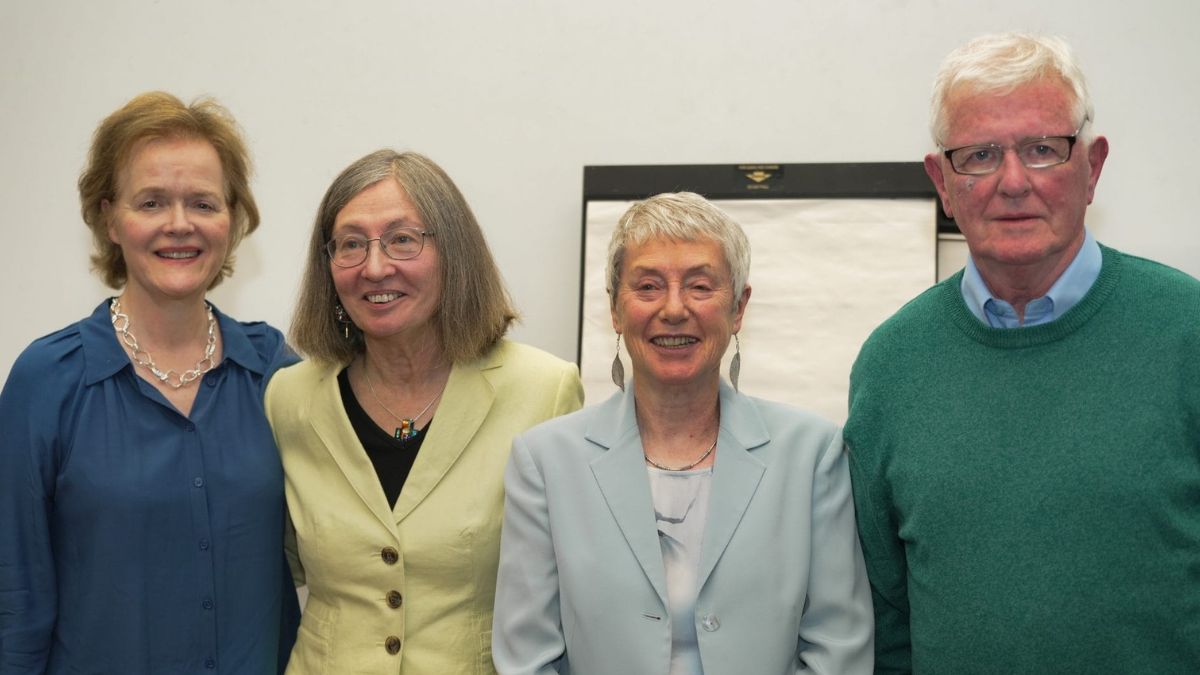
“This remarkable memoir is an enthralling account, beautifully written, of the word of God in one woman’s life.” So said Irish Jesuit theologian Dr Gerry O’Hanlon SJ speaking at the launch of Soline Humbert’s autobiography, A Divine Calling: One Woman’s Lifelong Battle for Equality in the Catholic Church, on Wednesday 1 October. He continues: “… and through it all, from the age of about 18, at the ironing board and the kitchen sink, up and down supermarket aisles, as well as in the more significant moments of life, a persistent call from God to be a priest.” But he also notes that the book was not all ‘high seriousness’. “There is much humour and human ordinariness (Kavanagh’s ‘bits and pieces of everyday’) laced through the telling of this story,” he explains, adding, “We even learn that on one occasion Soline appeared on the Late Late Show as a stand-in for Meryl Streep (156): who knew?! (Read his remarks in full below).
The launch took place in Trinity College Dublin’s School of Religion and Peace Studies. A packed audience was warmly welcomed by Dr Michael Kirwan SJ, Director of the Loyola Institute TCD, and speakers at the launch included former journalist Ursula Halligan, Phil Dunne (MC), the author herself, and Gerry O’Hanlon SJ (see photo). Click here to watch a full recording of the event and contributions »
Ursula Halligan, in her address, read a number of extracts from the book. She said the Soline’s profound experience of the call from God to be a priest “turned her life upside down,” adding, “Initially it nearly drove her mad.”
Soline’s Memoir is published by The Liffey Press ». In the foreword written by Dr Mary McAleese, the former Irish President says, “Soline … lays bare the profound suffering she has endured wanting to serve God as God wants and the Church needs, but being rebuffed, ignored, labelled, stereotyped, as if God only talks to clerics and like them has no time for women as equals. Who could believe in such a God?”
Speaking at the close of the event, the author thanked all those who had helped her down the years, and all who had come to mark the publishing of her memoir. She then read a passage from her book regarding one of her inspirational guides – St Thérèse of Lisieux – who herself had expressed the desire to be ordained a priest. In the reading from this section of her book Soline revealed a little known fact about St Therese who had a special reason for believing the age at which she would die.
Time to revisit the question of women’s ordination?
I attended a priestly ordination recently. The first reading told the story of the young Samuel, under the tutelage of Eli, learning how to discern God’s word. We are told that: ‘In those days it was rare for the Lord to speak: visions were uncommon’ (I Sam. 2, 1-20). More of this later.
This remarkable memoir is an enthralling account, beautifully written, of the word of God in one woman’s life. Her childhood and adolescence in France, with the enormous loss through early death of her much-loved mother; a young Hibernophile adulthood and then student, married and family life in Ireland- and through it all, from the age of about 18, at the ironing board and the kitchen sink, up and down supermarket aisles, as well as in the more significant moments of life, a persistent call from God to be a priest.
This call has caused great anguish and emotional and mental suffering to Soline. How to be faithful to it when there was no place for it in the Church that she called home? How to bridge the abyss between an apparently indifferent and cold clerical patriarchy and the insistent call of God? But it also brought great joy, not least through the support of her husband Colm and her family, as well as her many friends, in particular the brave and ever-loyal Fr Eamon McCarthy. Above all it was the joy of God’s support that sustained her. This is the principal source of Soline’s passionate conviction and unbending resolve.
It is not all high seriousness. There is much humour and human ordinariness (Kavanagh’s ‘bits and pieces of everyday’) laced through the telling of this story. We even learn that on one occasion Soline appeared on the Late Late Show as a stand-in for Meryl Streep (156): who knew?!
But what is truly astonishing is the ability in a secular age (when it seems ‘rare for the Lord to speak’)
to speak of God in such an accessible, ringingly authentic way. Yes, this is one person’s take on justice and human rights: but it is principally about God and God’s call. And so, for example, Therese of Lisieux (whose feats day we celebrate today and who herself had a vocation to priesthood), Joan of Arc, the Cure of Ars, Brigid and many other canonised saints are spoken of as friends in the same way as flesh and blood friends of today.
Soline is courageous and admirable, but she prefers to put her courage down to God’s grace and to prefer action from us to admiration. The candidate at the recent priestly ordination I spoke of had the opportunity to have his discernment of God’s call finally and authoritatively accepted by a bishop on behalf of the Church. Soline has not had this opportunity. Why? Simply and starkly because she is not a man, she is a woman.
The theological argument
And so, along the way, Soline examines the reasons for this exclusion. The Church claims to have no
authority to ordain women priests: but the Pontifical Biblical Commission in the 1970s found that
there was no scriptural warranty for this position. Moreover Karl Rahner SJ, writing in the late 1970s,
argued that the burden of proof should be with the Church to show this, and this burden has not
been discharged.
But how can a woman represent the male Jesus, act ‘in persona Christi’? Well, as Soline notes, the
Tradition has been very clear that ‘what has not been assumed has not been saved’ – in other words
the crucially significant truth is that Jesus became a human being, not that he became a man or a woman. Furthermore, as is well known in sacramental theology, a woman can represent Christ when, in emergency situations, she baptises and, in an ordinary everyday occurrence, represents Christ when she is married to her husband in Christian marriage, as he represents Christ for her, husband and wife being the ministers of this sacrament and not the presiding priest. We are then, as our theology of Creation points out, images and likeness of God and of Jesus Christ as human beings primarily, not as specifically male or female.
But is it not Christ as head that is in question with respect to priesthood? Yes, but the Church’s own teaching about this has developed over the years: and so, after nearly 2000 years of assuming that the husband was head of the wife in marriage (thus representing Christ as head), we are now (since Vatican II, confirmed in the 80s by John-Paul II) taught of the mutual and reciprocal covenant between man and woman, their shared authority. In other words, headship, leadership, governance and authority are not determined by sex or gender.
But, as Pope Francis said, following the Swiss theologian Hans Urs von Balthasar’s proposal, perhaps
there is something essential in the male, the Petrine principle, that lends itself to authority, whereas
the female is essentially constituted by receptive love, the Marian principle? Soline quotes theologian Marinella Perroni’s response to this contested theological position: ‘Doesn’t the Marian-Petrine principle express an ideology and rhetoric of sexual and gender differentiation that has now been exposed as one of the covers for patriarchal privileges?’ (224).
At this stage as human beings in many parts of the world we benefit from the skill and abilities of women as lawyers, doctors, CEOs of companies, bus drivers, plumbers, electricians, prime ministers and presidents. We are bound to ask, why in the Catholic Church can this not extend to deacons and priests, to bishops and popes? If God were truly behind this exclusion and this could be convincingly shown, then many would accept it. But failing a persuasive explanation, one must suspect bias, perhaps largely unconscious and due to a deep seated ‘habit of the heart’, an inherited and now anachronistic blind spot with considerable negative consequences. This toxic situation for all of us needs to be addressed, not least for missionary credibility. Our situation now has echoes of the tardy Christian response to the scandal of slavery.
What are we to do? (Acts, 2, 37)
So, if the core arguments for exclusion are unpersuasive, what are we to do? Well, towards the end
(235) Soline characterises her memoir as her contribution to the synodal pathway still actively underway in Ireland and the Universal Church, now at its implementation stage.
As it happens, the Preparatory Document for the Irish pre-synodal Assembly to be held in Kilkenny on October 18 th has just been published (Baptised and Sent, Sept 18, 2025). It makes for interesting reading. It is apparent that the role of women, including ordination, is still a lively and contested topic. There is some edgy language describing the current situation: ‘frustration over slow progress’, inadequate and patronising’, a lack of trust and transparency. Nonetheless, one of the concluding priority proposals goes as follows: ‘recognising and including women’s’ gifts, leadership and co-responsibility at every level of Church life, as a matter of justice and credibility’. This conclusion, by the way, is based on the equal dignity of all through baptism, resonating with the slogan in use by supporters of the ordination of women, quoted by Soline (p 6): ‘Ordain women or stop baptising them!’
Given all this, I urge all Assembly participants, including bishops, to listen to the story told in this
book and then ask themselves this question: Is it not time to request the Vatican to revisit the question of the ordination of women, in creative fidelity to the Tradition and to the signs of our times?
This revisiting should, of course, have at its heart the open-minded and hearted listening to stories like Soline’s: this is, after all, not primarily about ‘issues’, it is first and foremost about the lives of persons who live among us and who suffer great pain because of how they are treated. But it is also an ‘issue’, and is it not time that we stopped beating about the bush and undertook a fair and open re-examination of current teaching, not least due to its non-receptivity by the ‘sense of faith of the faithful’ in many parts of the world?
In discerning this question the participants might be helped by taking on board the remarks of the distinguished German theologian and Cardinal, Walter Kasper, about the permanent diaconate: ‘There are good reasons that make it theologically possible and pastorally sensible to open the permanent diaconate to women…each local church would be free to decide whether to make use of this possibility or not’ (The Tablet, Nov 9, 2024, 23).
I for one remain a committed supporter of the synodal process. With its encouragement of free speech and generous listening I believe it offers the most hopeful way of resolving contested issues. However, in the meantime, I am uncomfortable and disturbed, ashamed even, that it is taking so long to address the issue of female ordained ministry, and that there is so little urgency, transparency and accountability around how we do it. Let’s grasp this nettle and act of the gospel refrain: do not be afraid.
Finally, to those of you here this evening, do buy, do read, do discuss with family and friends. This
publication is a significant event for the Irish and Universal Church. It is prefaced by a Foreword from
Mary McAleese that is incisive and substantial. Many thanks and warm congratulations to Soline.
Gerry O’Hanlon SJ
1 October 2025



